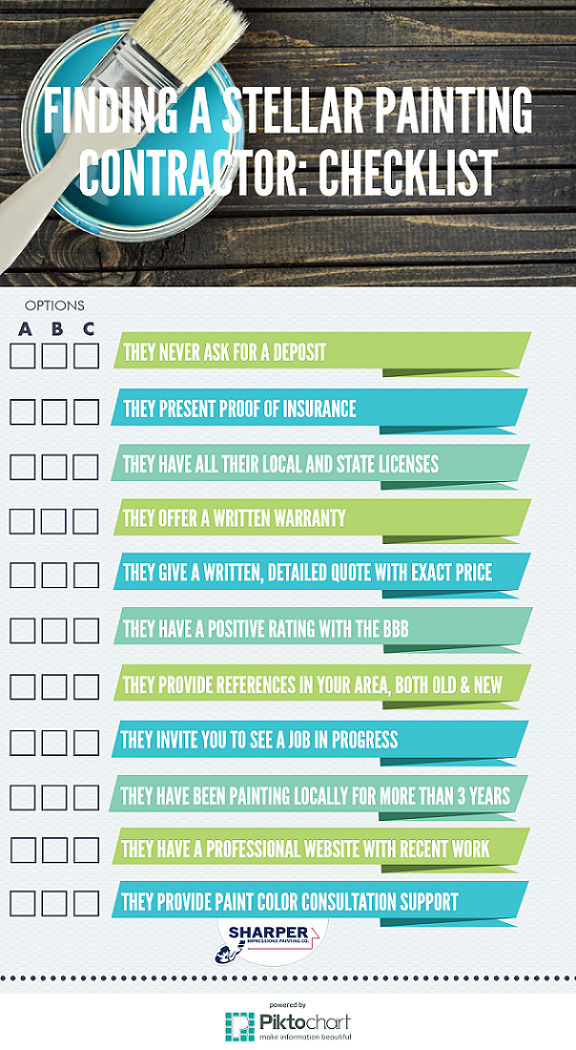All Set Your Wall Surfaces For Paint With Vital Pointers And Strategies That Assure A Smooth Surface-- Explore The Vital Actions To Enhance Your Job
All Set Your Wall Surfaces For Paint With Vital Pointers And Strategies That Assure A Smooth Surface-- Explore The Vital Actions To Enhance Your Job
Blog Article
Write-Up Developed By-Daugherty Chaney
When you're prepping your walls for paint, it's essential to adhere to a methodical procedure to guarantee a remarkable coating. Begin by analyzing residential painting in portland for any damage; this action can make or break your job. Once you've recognized any concerns, cleansing the surface area correctly is vital, as an unclean wall can affect paint adhesion. After that, you'll require to patch any type of flaws and apply a guide. Yet there are specific strategies and suggestions that can boost your prep work video game-- let's check out those additional to accomplish the best results.
Assessing Wall Surface Problem
Before you get your paintbrush, take a minute to assess your walls' condition. Look for any type of noticeable damage like fractures, openings, or peeling paint. These flaws can impact how the paint sticks and looks as soon as it's completely dry. If you notice any type of substantial damage, you'll need to focus on repair services before diving right into painting .
Look very closely at the structure of your wall surfaces. Is the surface smooth, or exists structure that might call for unique consideration? Smooth wall surfaces typically require much less preparation, while textured surfaces might require more time to paint evenly.
Likewise, take into consideration the previous paint work. If the old paint is shiny, it mightn't allow new paint to stick properly. You'll wish to know if your wall surfaces have been repainted with oil-based or water-based paint, as this can influence your selection of primer or paint.
Ultimately, bear in mind of any kind of wetness concerns. If you see indicators of water damage or mold and mildew, address these issues immediately to stop additional problems.
Cleaning the Surface area
As soon as you've examined the condition of your wall surfaces, the following step is cleansing the surface area. Start by collecting your products: a container, cozy water, a moderate cleaning agent, a sponge or cloth, and a scrub brush for tougher areas.
Begin at the top corner of the wall surface and function your way down. Mix the detergent with warm water in your container, after that dip the sponge or cloth right into the remedy. Wring it out to prevent extreme moisture on the walls.
As you clean up, pay attention to areas that may've gathered dirt, grease, or fingerprints. For persistent stains, make use of the scrub brush carefully to avoid damaging the paint under. Rinse your sponge or towel often in tidy water to stop spreading out dust around.
After cleaning, it's essential to clean the wall surfaces with a damp cloth to remove any soap deposit. This step makes sure a smooth surface for the brand-new paint to adhere to.
Enable the wall surfaces to completely dry entirely prior to moving on to the next preparation actions. commercial painting contractors parker will help create a fresh canvas for your painting job, ensuring the very best outcomes.
Patching and Priming
Patching and priming are essential steps in preparing your walls for a fresh layer of paint. First, check your wall surfaces for any type of openings, fractures, or imperfections. Use a top quality spackling substance or patching paste to fill up these areas.
Apply the substance with a putty blade, smoothing it out so it's flush with the surrounding surface area. Enable it to dry completely, and after that sand it gently until it's smooth and also.
As soon as recommended site have actually covered every little thing, it's time to prime. Guide assists secure the patched areas, guaranteeing the paint adheres properly and supplies an uniform surface. Pick a guide ideal for your wall surface type and the paint you'll be making use of.
Apply the primer using a roller for bigger areas and a brush for corners and edges. If your covered locations are considerably large or porous, you may wish to use a second coat of guide after the initial one dries out.
After priming, let every little thing completely dry completely before carrying on to painting. This preparation won't only enhance the appearance of your wall surfaces however additionally prolong the life of your paint job.
Take your time, and you'll be pleased with the results.
Final thought
By following these simple steps, you can achieve a smooth and professional coating on your walls. Beginning by assessing their condition, after that clean and patch any imperfections before applying primer. Bear in mind to permit adequate drying time and make certain everything is smooth before you dive into painting. With the right preparation, you'll establish the stage for an attractive change in your room. Now, gather your products, inhale the fresh air, and prepare to paint!
